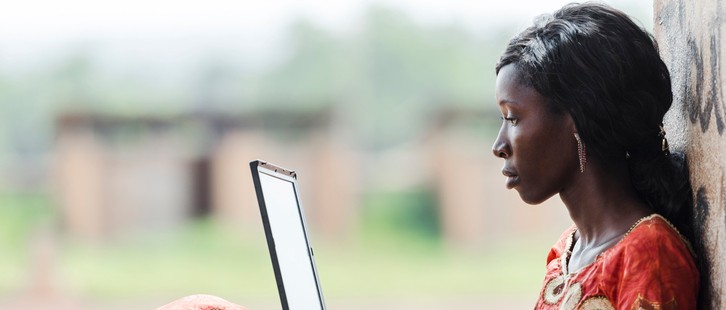Our Opinion: 2018
Technology is speeding up growth in Africa

In the 2000s, Africa grew by more than 5% a year and the financial media was full of stories about its potential. The continent’s stock-markets are widely seen as a commodity play, so it’s no wonder investors’ enthusiasm has dwindled in the past few years as the bear market in raw materials took hold. But there has always been more to the Africa story than that – and stronger global growth will bolster metals and food exports too.
Sub-Saharan Africa, which comprises 46 of the continent’s 54 economies, is expected to grow by 3.2% this year, says the World Bank. Strip out heavyweights Nigeria, Angola and South Africa, beset by the oil-price slide or severe domestic political turbulence, and the region’s growth rate is 5%.
The continent’s development is a triumph for free trade. Many states have turned away from the protectionism and socialism of the post-colonial era and become more integrated with the global market system. Economic liberalisation has reduced poverty, bolstered literacy, and encouraged people to demand more political freedom. Zimbabwe, for instance, will be one of 15 African countries to hold elections this year.
Thanks to the young population, the labour force should reach around 1.1 billion by the early 2030s and, by the middle of the next decade, urbanisation will have been so rapid that the equivalent of another ten cities the size of Cairo will have materialised, according to McKinsey Global Institute. Productivity is always higher in cities than in the countryside, so this bodes well for growth. Technology is giving growth an added fillip. Many people are going straight from bricks of banknotes to phone-based payment systems without the intervening stage of bank accounts.
Deepening ties on the continent would help too, says The Economist: African countries still trade twice as much with Europe as they do with each other. Enter the Continental Free-Trade Area (CFTA), which is due to be signed in March, but then requires 15 states to ratify it if it is to come into force. In the best-case scenario, with all the continent’s tariffs being removed, intra-African trade would be 52% higher in 2022 compared with 2010. Africa has a long way to go, but the sense of progress is palpable.
Misconception of Africa’s true variety and diversity is widespread, and can have devastating consequences. Africa is often still viewed and portrayed as one large land mass shrouded in mystery. The media regularly paints negative images of a region where only poverty, famine, disease and conflicts thrive. This may accurately portray isolated parts of Africa, but does not properly reflect the vast economic, social, and political activities of this continent. Consequently, investors can miss out on opportunities.
Rapid growth opportunities exist particularly in Côte d’Ivoire, Egypt, Ghana and Kenya. These economies can all expand at annual rates of 5% or more, we think, although they need to continue doing their homework in the years ahead. Mauritius and Morocco are more advanced than most other countries discussed here, and will grow less. Still, they have opportunities too, for example via growing their manufacturing exports to Europe in the case of Morocco, or further extending their dominance as a financial hub in the case of Mauritius.
Nigeria and South Africa, the two dominant economies, face less benign prospects. While Nigeria simply needs to continue reforming to unleash its full economic potential, South Africa’s situation is more precarious. More market-friendly policies are needed there if the country wants to keep its economic potential from deteriorating further.
Investors will be paying a lot more attention to African markets in 2018.
12th February 2018
